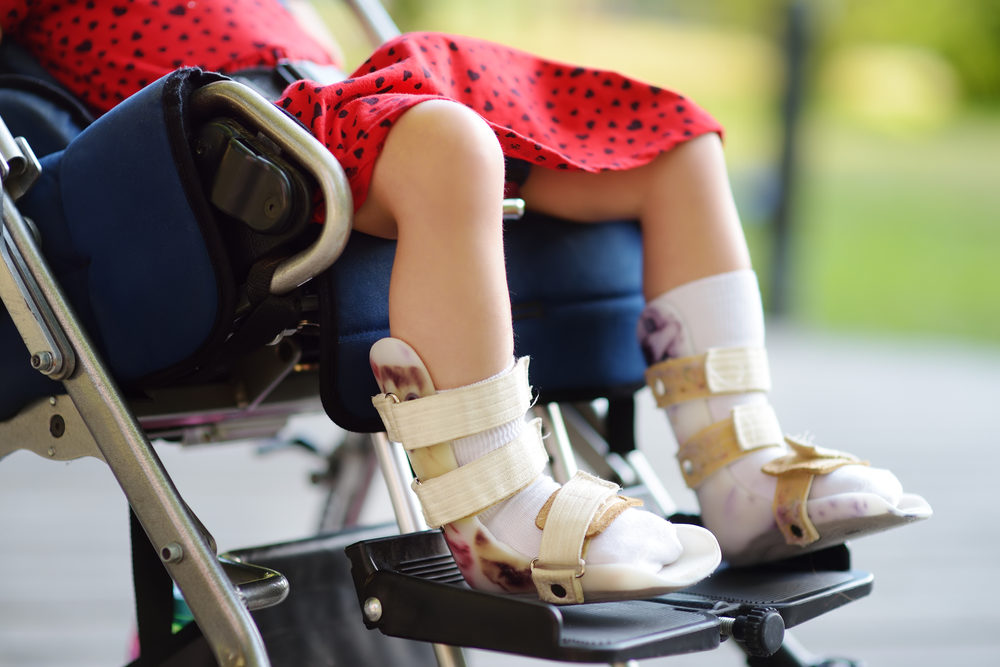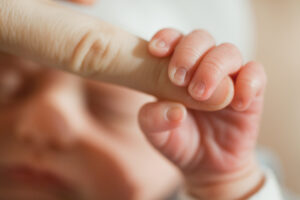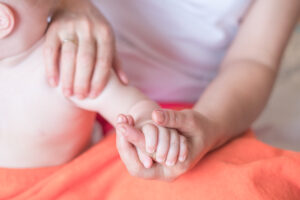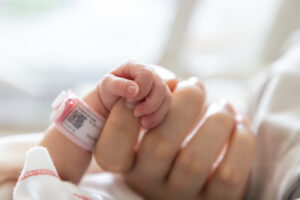
Cerebral palsy (CP) is the most common motor disability in children. Cerebral palsy symptoms can be severe and debilitating, while other times the symptoms are not as easy for others to see, creating more of a secret struggle only the affected individual and the family may understand.
Often cerebral palsy is caused by a birth injury. Instead of a family preparing to welcome home a new, healthy baby, they may be faced with the overwhelming news that their child will be forced to endure life managing cerebral palsy symptoms because of a medical error.
What is Cerebral Palsy?
The name itself sheds light on its meaning. “Cerebral” means having to do with the brain. “Palsy’’ is a lack of muscle control. Cerebral palsy covers a range of neurological disorders. It manifests in physical disabilities created by abnormal brain development or damage to the developing brain causing a person to lose control of their muscles. It affects how a person can move as well as the individual’s balance and posture. A diagnosis often occurs at birth or soon after.
Many people with cerebral palsy have related conditions as well. They could include an intellectual disability, seizures, problems with vision, hearing, or speech, scoliosis, or joint problems.
Signs of Cerebral Palsy
Between birth and five years old, a child should reach certain milestones like rolling over, sitting up, and walking. A delay in achieving these goals could be a sign of cerebral palsy, or possibly a sign of another health issue. The Centers for Disease Control & Prevention (CDC) offers the following early signs of CP that parents can be on the lookout for in their child.
From ages three to six months, if the baby, when held, feels stiff or “floppy,” seems to overextend his back and neck when cradled in someone’s arms, or the baby’s legs get stiff and cross or scissor when he is picked up.
From six months to ten months, if the baby doesn’t roll over in either direction; if the baby cannot bring hands together or bring them to his mouth; if the baby reaches out with only one hand while keeping the other fisted.
From ten months of age and older, if the child crawls in a lopsided manner, pushing off with one hand and leg while dragging the opposite hand and leg; scoots around on buttocks or hops on knees, but does not crawl on all fours.
Four Different Types of Cerebral Palsy
Cerebral palsy is found in one out of every 345 children. And, just like how every child is unique, so too is each case of CP. However, four different types of CP have been identified.
They include Spastic CP, whose key identifier is stiff muscles, causing movements to be awkward. Dyskinetic CP causes problems controlling movements in hands, arms, feet, and legs, making it difficult to sit and walk. It can also cause problems in the face or tongue, causing the person to have difficulty swallowing, eating, and talking. Ataxic CP, the rarest type, includes those who suffer from severe balance and coordination issues and have extreme struggles with quick movements or movements that need to be controlled (like writing). Mixed CP includes people who have symptoms of more than one type of CP (the most common type of mixed CP is spastic-dyskinetic CP).
What Causes Cerebral Palsy?
Cerebral palsy results from an injury to a developing brain, but the specific cause of cerebral palsy may not be known in some cases.
CP is often congenital, meaning it occurred during pregnancy or birth, but it could be a case of acquired CP, meaning the brain damage occurred in the weeks following birth.
Factors that can increase the risk for congenital cerebral palsy include small birth size, premature birth, being a twin (or other multiple sets), in vitro fertilization or other reproductive technology, untreated newborn jaundice (kernicterus), or another complication during the birthing process.
While fewer children have acquired cerebral palsy, factors that can cause it include contracting meningitis, suffering a serious head injury, or a problem with blood flow to the brain, which a blood clotting problem could cause, or a heart defect that was present at birth. Sickle cell disease, a genetic disorder, has also been recognized as a cause.
Cerebral Palsy Due to Medical Negligence
Mistakes can also cause CP, such as medical negligence by a doctor or hospital, whether during pregnancy, birth, or immediately following. Doctors and medical staff involved with the pregnancy and the delivery of a baby are required to provide the standard level of care. They must stay diligent in anticipating dangerous issues and emergencies. Any negligence on their part compromises the health and safety of both the mother and the baby.
Here is a list of medical errors that can lead to cerebral palsy:
- Oxygen deprivation, either during labor or by the umbilical cord cutting off the oxygen supply.
- Neglecting proper fetal monitoring, which can leave a baby in distress inside the womb.
- Delay in performing interventions such as a cesarean section (C-section) when a baby or mother is in distress.
- Vacuum extractor or forceps errors causing bleeding on the brain
- Untreated skull fractures that affect oxygen levels or cut off the circulation of oxygen-rich blood to the brain.
- Errors made during C-sections that damage the brain.
- Failing to obtain informed consent so the mother understands procedures and associated risks and can therefore accept or decline treatment.
- Poor communication between doctors and nurses that results in incorrect or omitted instructions.
- Misdiagnosing or failure to diagnose a medical condition that can worsen and cause permanent injury.
- Failure to provide adequate postpartum care after the birth of the child
How a Birth Injury Lawyer Can Help After a Cerebral Palsy Diagnosis
Cerebral palsy is a condition that stays with a person for life and can have devastating financial impacts. If your child has cerebral palsy caused by medical negligence, it is important to gather evidence proving the mother was under the care of the particular medical team, show how the negligence occurred and the harm it inflicted on the child.
Seeking legal representation from a specialized birth injury attorney can enable you to prove the errors that happened and ensure you receive the compensation necessary to provide lifelong care to your child. Some of the financial impacts include the cost of surgeries, therapy, medication, transportation, housing modifications, and other necessities.
Generally, a family has three years from the date your child was injured, or the date you reasonably could have been expected to know they were injured, to file a claim for damages. Therefore, the sooner a birth injury attorney can begin working for the family, the better.
If you live in the Washington, D.C. or Charleston, West Virginia area and suspect your child has cerebral palsy due to a medical error at birth, Paulson & Nace can help you obtain the compensation you deserve to provide the level of care your child needs. Schedule a free case evaluation by calling (202) 463-1999 or contact us online.
@thumbnail.jpg)
Both an Emory School of Law graduate and MBA graduate of Goizueta Business School at Emory, Chris Nace focuses his practice on areas of medical malpractice, drug and product liability, motor vehicle accidents, wrongful death, employment discrimination and other negligence and personal injury matters.










Comments for this article are closed.